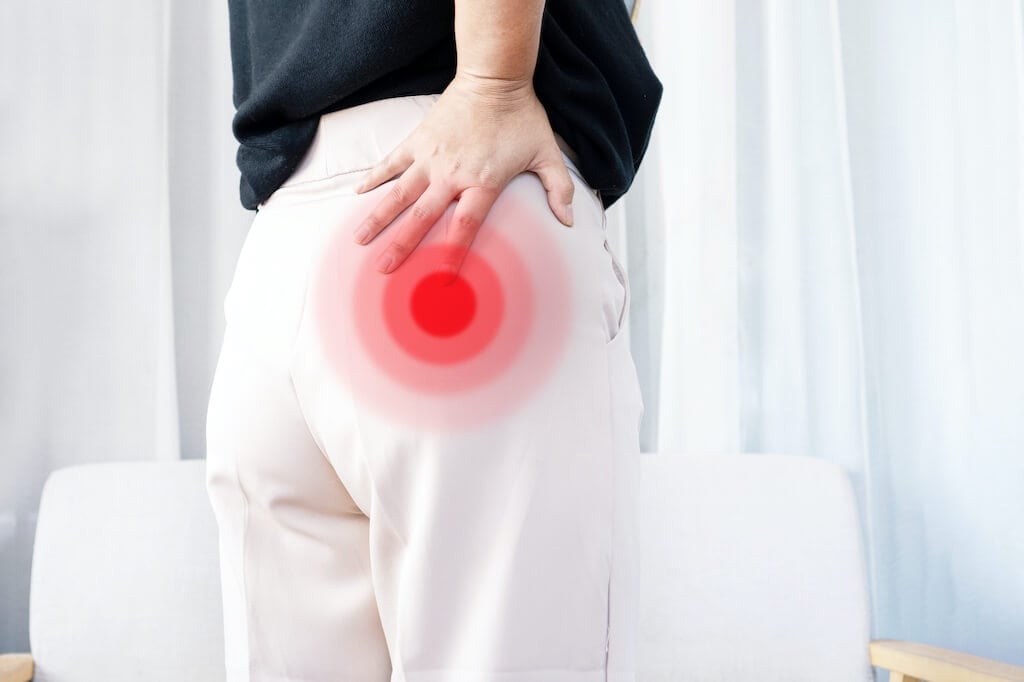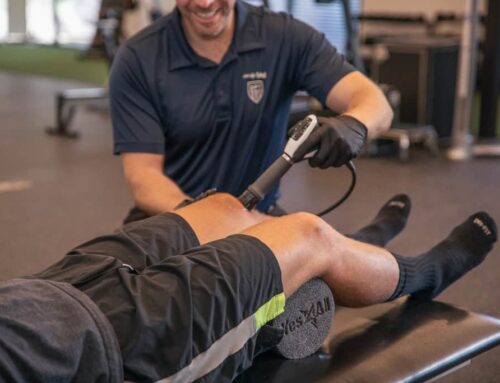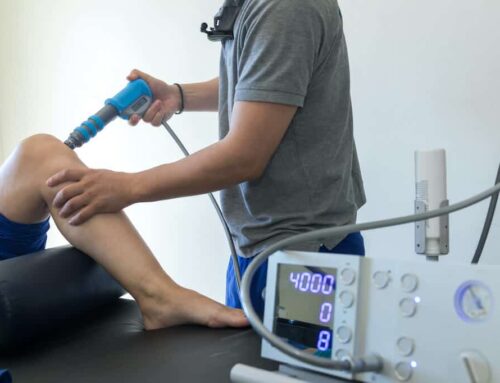Low back pain can be one of the most challenging conditions to live with, and it comes in many forms. One of the most frustrating forms of low back pain is sciatic nerve pain, often called sciatica.
If you’re living with sciatic nerve pain, then you know all too well how much it can interfere with your daily life, and how hard it can be to know exactly what’s causing your back or leg pain. More importantly, the thought of missing out on life or losing your independence due to your pain can make sciatic nerve pain far more difficult to live with.
The good news is that with the right information and treatment plan, you can start seeing relief and feeling like yourself again.
To help you relieve your symptoms, treatments like physical therapy can be highly effective. In this article we’ll share some basics of sciatic nerve pain, how physical therapy can help, and how to get the best results with your treatment.
Why Does Sciatic Nerve Pain Happen?
Although sciatic nerve pain can be difficult to live with, understanding why it happens can help you get relief and prevent it from happening in the first place.
Your sciatic nerve is a large, very thick nerve that runs along your buttock and upper leg. Some of the most important functions of your sciatic nerve are providing sensation to your brain and creating muscle activity in your leg.
The exact cause of your pain might be related to your lifestyle, normal activities and exercise, or another health condition. The most common cause of sciatic nerve pain is nerve irritation, which can be due to pressure, stretch, or swelling of the nerve.
For most people, this means that things like sitting on a hard surface for a long time (causing nerve pressure), lifting something heavy with a rounded back (causing nerve stretch), or a fall onto your side (causing swelling) are all potential causes of sciatic nerve pain. For example, a delivery driver might sit in an uncomfortable position while driving, bend over to pick up heavy boxes throughout the day, and occasionally experience falls on their side or hip.
In reality, sciatic nerve pain often isn’t caused by just one thing, and a combination of all of these factors can lead to stubborn pain in your back, hip, and thigh that stops you from enjoying your favorite activities. For most people, finding treatment from a trustworthy expert is the best way to start on the path to recovery.
Why is Getting Treatment for Sciatic Nerve Pain Important?
Like many other difficult conditions, sciatic nerve pain should be addressed as early as possible to get the best long-term results.
Because sciatic nerve pain indicates irritation of the sciatic nerve, it’s important to solve the irritation and allow the nerve as much time as possible to heal. When a nerve is irritated for a long period of time without the chance to heal, the nerve may stop working properly and cause long-term issues with sensation or muscle strength.
More importantly, long-term issues with nerve health can mean missing out on important things in life, compromising on your activity level, and losing physical independence. If you’re struggling with sciatic nerve pain, it’s important to think about the decades yet to come, and what you really want to get out of them.
Alternatively, addressing sciatic nerve pain early can help relieve your symptoms, prevent long-term complications, and help you enjoy your favorite activities without limitations long-term. One of the most effective ways to make this happen is with physical therapy.
How Can Physical Therapy Help My Sciatic Nerve Pain?
If getting relief from your sciatic nerve pain and staying active in everyday life is important to you, then physical therapy should be on the top of your priority list.
In short, physical therapists are movement experts who specialize in finding the root causes of nerve pain, fixing habits that are holding you back, and helping you perform your best day after day.
When it comes to treating sciatic nerve pain, here are some of the most important things that your physical therapist can do for your recovery.
Correcting Pelvic Alignment
Your pelvis is just below the center of your body, and how it’s aligned can have a big effect on conditions like sciatic nerve pain. For example, how your pelvis is tipped during prolonged sitting or bending over affects the pressure on your back and tension in your sciatic nerve.
When working with a physical therapist, they can help you better understand how your pelvis is aligned during important activities, show you what a corrected position feels like, and teach you strategies to help maintain better alignment throughout your day. With targeted exercises and a personalized home program, you can make improvements in your pelvic alignment fairly quickly.
Treating Muscle Imbalances
Each muscle in your body is like a pulley, and each pulley helps create tension for a certain motion. When muscles in your back and hip are well balanced, movements are normal and pain-free. When they aren’t well balanced, stress and strain can quickly start to build up around your sciatic nerve, leading to pain.
With the help of your physical therapist, you can find out which muscles are weak or tense, address compensation patterns that are overusing certain muscle groups, and learn how to prevent new muscle imbalances from happening in the future.
Some important techniques include exercises to strengthen your back and hips, neuromuscular reeducation to activate the muscles of your core, and movement training to learn how to perform important movements like squatting and hinging safely.
Relieving Pressure on Discs, Joints, and Nerves
When it comes to radiating pain, one of the most common causes is pressure on discs, joints, or nerves that causes irritation. For a lot of people, making progress towards recovery can be totally blocked until pain is under control again.
When you’re having more pain in your back, hip, or leg, your therapist can help identify how much of your pain is due to uneven pressure in your back, and provide relief for symptoms using techniques like nerve glides or spinal traction.
Once your nerve pain is under control again, your therapist can teach you exercises and strategies to help prevent uneven pressure due to alignment or muscle imbalances.
Coaching and Support
Sciatic nerve pain can be difficult to treat on your own, especially while discomfort and fear of worsening your condition are holding you back from thinking clearly and staying active.
Working with a physical therapy expert who has special training in treating conditions like sciatic nerve pain can help your recovery not only physically, but mentally as well. Knowing when to move (even if you have pain), how to handle flare-ups, and what activities to focus on can help you build the confidence you need to make a full recovery.
Getting The Right Diagnosis
One of the most frustrating parts about sciatic nerve pain is that it can be hard to identify on your own. In fact, many people think they are living with sciatic nerve pain when their pain is actually from hip bursitis, facet dysfunction, or another condition with similar symptoms. This can lead to less effective treatment, more pain, and a poor recovery process.
One of the reasons it’s so important to get the right diagnosis for your sciatic nerve pain is that it can change the type of treatment you need. More importantly, having the right diagnosis means that you can start with the right treatments sooner and recover faster. With the help of an expert, you can diagnose the what (where the pain is coming from) and the why (the root cause) of your condition for a more effective treatment.
What Makes The DPT Experience Different for Recovering From Sciatic Nerve Pain?
As leaders in the treatment of sciatic nerve pain and other conditions that hold active people back from doing what they love, The Doctors of Physical Therapy offer an exceptional recovery process from start to finish. With state-of-the-art treatment approaches, regenerative medicine modalities, and specialized movement analysis, we can help you identify the root causes of your sciatica nerve pain and start seeing real progress easier than ever before.
More importantly, we want to get to know you and help you reach your performance goals and get back to doing what you love as quickly as possible. With thorough evaluations, expert treatments, and ongoing support, you can optimize your performance and feel you best again.
Schedule an appointment today.







